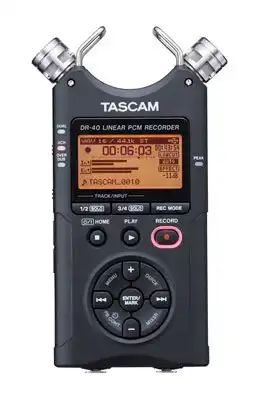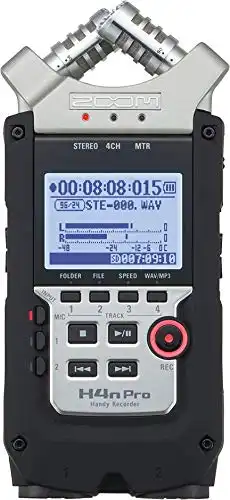Two of the most popular handheld recorders available today are the Tascam DR-40 and the Zoom H4N. Both of these are compact enough to use remotely while providing you with high-quality audio.
But is there any difference between them? And, more importantly, which is the best? We decided to find out and have taken an in-depth look at each.
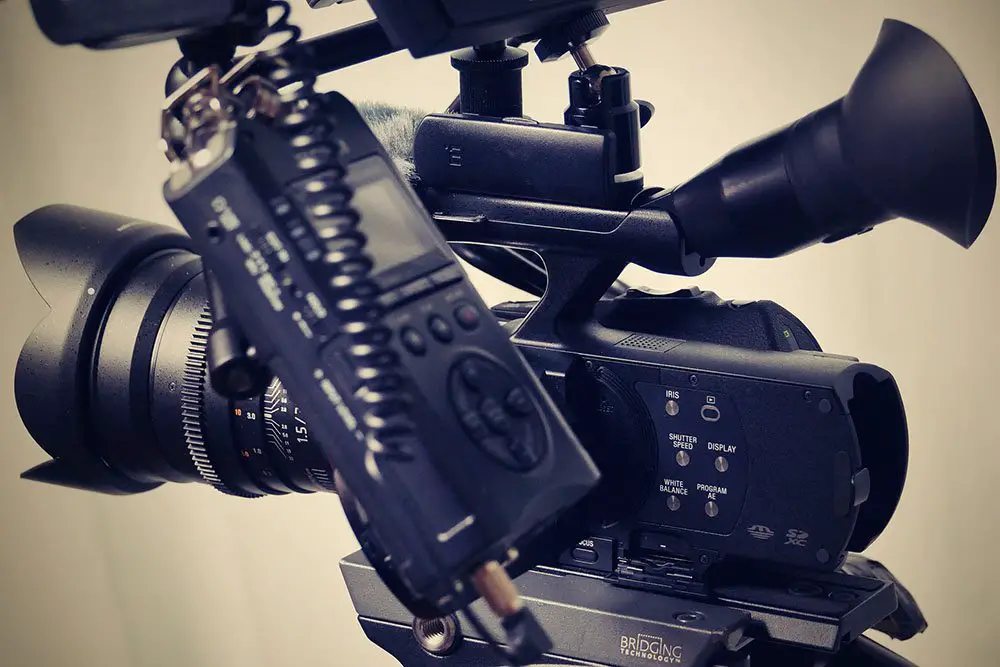
Table of Contents
Design
Aesthetically, both the Tascam DR-40 and the Zoom H4N would fit in with any recording setup. Both are remarkably similar in this respect, and each brand seems to have thought about style and durability.
Both digital recorders feature a solid, all-metal design, which ensures they are as durable as possible. This is ideal when recording outdoors as the risk of accidentally dropping increases. However, with a super-tough recording device, any damage occurring is significantly reduced.
Built-In Microphones
While aesthetics and durability are essential, your handheld digital recorder’s recording capabilities must also be high quality. The Tascam DR-40 and the Zoom H4N are masters in their field here, and both feature two built-in microphones. These microphones operate with a unidirectional polar pickup pattern, perfect for outdoor recording.
This is because they will only focus on the sound directly in front of them while simultaneously blocking out any background noise. So, even if you’re recording in a hectic environment (such as a coffee shop or a shopping mall), your vocals will shine through above other noise.
One thing that separates the two recorders regarding their built-in microphones is that the Tascam DR-40 can also be switched from XY to AB recording. Meaning it can record with an omnidirectional pickup pattern and a unidirectional pattern. So, if you’re recording a group of people at once, you can place the recorder in the center of a circle, and everybody’s vocals will be recorded clearly.
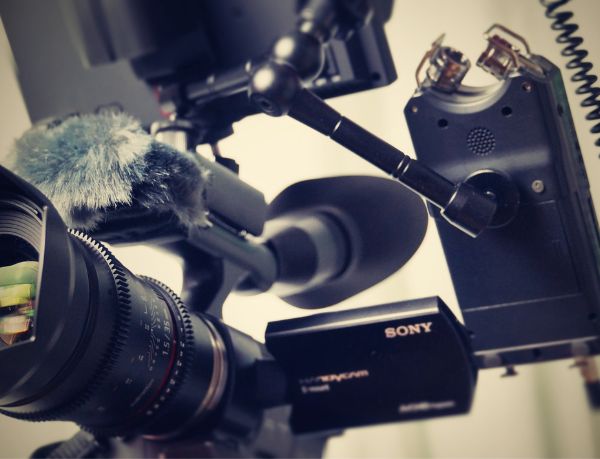
External Microphones
Another fantastic feature that the Tascam DR-40 and the Zoom H4N have to offer is two XLR connections on the bottom of the recorder. This allows you to connect two external microphones and record up to four voices simultaneously! You’re even offered a multitrack function with both recorders, allowing you to record each voice onto a separate file. This makes editing and mixing more manageable than ever.
Ease of Use
Of course, being able to navigate your way around your handheld digital recorder is a hugely important factor. And yet again, both the Tascam DR-40 and the Zoom H4N have been designed to be as easy to use as possible. Every function you’ll need to access is made readily available through clearly-labeled buttons located directly on the front of the recorders.
So, it’s all super easy whether you need to hit record, playback your tracks, or skip back to make sure everything sounds excellent before you start your full recording session. It’s also effortless to see what microphone you’re recording with, your recording time, and other essential information through the large screen both recorders feature.
Audio quality
When choosing between the Zoom H4n and Tascam DR-40, there are key things to keep in mind. First, both of these devices are capable of delivering excellent audio quality. They perform well on external mikes and internal inputs and do a similarly excellent job capturing audio.
Another thing to consider is how the devices handle different recording scenarios. The Zoom H4n is more versatile and packed with more features and onboard effects. The Tascam DR-40, on the other hand, is better suited for simpler recording scenarios.
That said, the audio quality won’t be a deciding factor in choosing between these two.
Monitoring
The Tascam DR-40 and the Zoom H4N also feature a 3.5mm headphone jack and a volume switch directly on the bottom. This is useful for a couple of reasons. First of all, you’re able to monitor your levels throughout your recording session. It’s also super useful as you’ll be able to record a small section and play it back to check on the quality before you start recording properly.
This undeniably saves you time when it comes to editing. It also eliminates the nightmare scenario of uploading your file to your editing software and finding nothing has been captured!
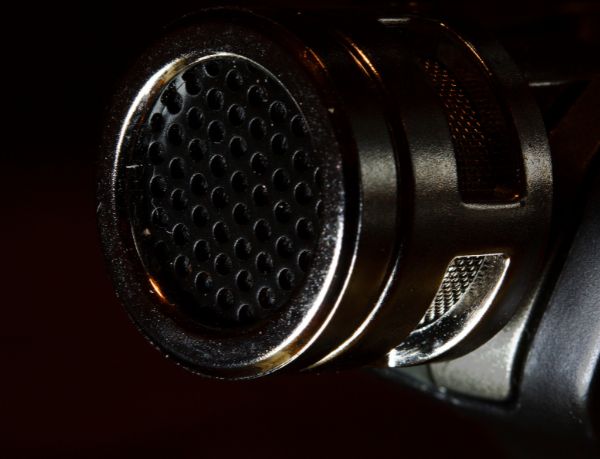
Memory
There is a slight difference between the Tascam DR-40 and the Zoom H4N regarding memory. The first thing to note is that both can record onto SD cards up to 32GB. However, the Tascam DR-40 comes with a 2GB memory card as standard, while the Zoom H4N doesn’t come with any included memory card. This means that you’ll need to purchase one separately before you can begin using it.
Brands change things up a lot, so there may be a time in the future when the Zoom H4N does come with some memory offerings. But, for now, if you want that extra bit of value for money, the Tascam DR-40 could be the way to go.
Power
Luckily, both recorders are equipped with unique features that will ensure they don’t die on you while you’re recording!
Both the Tascam DR-40 and the Zoom H4N feature Phantom Power. This means they can be connected to another device, such as a DSLR camera, and feed off the power it uses to function.
This is particularly useful if you want to record video and sound simultaneously without relying on a low-quality microphone built into your camera. Each recorder can be powered by batteries, too. The Tascam DR-40 requires 2xAA batteries, and the Zoom H4N also requires 2xAA batteries to function in this way.
You can also establish a permanent power supply by connecting a micro USB to each recorder. This is ideal if you’re recording in a studio environment or have access to an electrical outlet when you’re recording remotely.
Price
There isn’t a huge difference in terms of pricing, but the Tascam DR-40 comes out as the cheaper of the two, with a general saving of around $50.
It certainly isn’t the lesser of the two recorders in terms of features or functionality, but it has a more evolved counterpart in the Tascam DR 40 X. The DR40X has some extra features that the Tascam DR40 doesn’t; however, the DR40 still stands as one of the best handheld digital recorders you’ll encounter.
Both recorders also come with a one-year warranty from the date of purchase, so you’re offered a little extra value for your money.
User experience
If you’re trying to decide between the Tascam DR-40 and the Zoom H4n, it’s essential to consider your needs and what each machine offers. Based on experience from other users, Tascam has more features in general, but Zoom offers slightly better performance.
For some users, DR -40 stands out because of its line-ins! They bypass the preamps, which can be a big plus if you’re recording in a noisy environment
However, one user has had a bad experience with the DR40. The onboard mics are susceptible to RF interference, and it’s had problems with electronic noise using phantom-powered mics plugged into the recorder. So if you’re planning on using external mics, Zoom might be a better option.
Ultimately, both of these recorders are great options for budget-conscious consumers. Remember that they’re both small format budget recorders and, therefore, susceptible to the problem of cheap preamps. So it comes down to which device offers the features that you need.
Conclusion
Is there an outright winner between the Tascam DR-40 and the Zoom H4N? Both are pretty similar, not only in design but also in functionality.
Both are good options if you’re looking to record up to four people at once. However, if you’d like to get clear vocals from a larger group of people, then the Tascam DR-40 would be the better choice. You’ve got the option to switch the microphones from unidirectional to omnidirectional recording. The Tascam DR-40 also comes with a small amount of memory, while the Zoom H4N does not. Also, if you want to get creative with effects, ZoomH4N would be a much better choice.
Whichever handheld digital recorder you choose, you’re guaranteed to get outstanding quality when recording remotely. However, it’s fair to say that the Tascam DR-40 is slowly becoming outshone by a more evolved version of itself. The Zoom H4N is yet to suffer this fate, so arguably, it could be more relevant for a longer time.
Frequently Asked Questions
What is Tascam most suited for?
Overall, the Tascam DR-40 is a versatile and user-friendly piece of equipment. It is suitable for recording vocals, various instruments, voiceover, podcasting, and more.
How long does the Zoom H4n battery last?
Zoom offers two recording modes – normal and stamina – which offer different trade-offs regarding sound quality and recording time. In normal mode, you’ll get 6 hours of recording time at 16-bit/44.1kHz, while in stamina mode, you’ll be able to record up to 11 hours.
